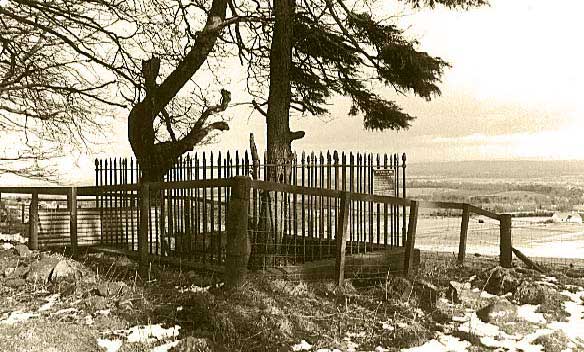THE BATTLE OF RULLION GREEN 1666 |
 |
Cromwell’s rule brought eight years of peace and relative stability to Scotland. In 1658, Cromwell died, and Charles II was restored to the throne in 1660. Charles displayed no desire to return to Scotland himself and appointed the earl of Lauderdale as secretary of state and John Middleton as royal commissioner. The king, who had signed the Covenant ten years before, and who promised on his restoration to protect the Church as established by law, now began to demonstrate his true feelings towards the Presbyterian Church. The Restoration Parliament of 1661 passed a Rescissory Act, nullifying all legislation since 1633. The ‘Church as established by law’ was now the Episcopalian Church. Within a year, episcopacy had been re-established and the Covenant had been declared illegal. An Act of Indemnity passed in 1662 offered pardons to hundreds of prominent Presbyterians upon payment of fines, but others were not so fortunate. The marquis of Argyll and Johnston of Warriston were put to death. The practice of appointing ministers in the Scottish Church through congregational vote, which had been in effect since 1649, was abolished and lay patronage was reintroduced. All ministers were required, within six months, to have their appointments reconsidered by the lay patron of the local kirk and the bishop of the diocese. In February 1663, on the day by which all were supposed to have conformed to the new conditions, almost 300 ministers resigned. Their places were taken by Episcopalian ministers, but the newcomers, inexperienced and unpopular, found themselves with poor congregations. Most of the ousted clergy took their ministry into the open air, and their congregations followed. Religious meetings, or ‘conventicles’, were held in the countryside. The government’s response to this defiance was to impose fines on those who attended these meetings, or who simply refused to attend church, and to enforce payment of the fines using the military. In the southwest of Scotland, home of the Whigs, the most extreme of the protesters, the persecution resulted in uprising. Sir James Turner, leader of the dragoons who were employed in tracking down the Covenanters, was taken prisoner in Dumfries. His captors gathered a large band of supporters and, in November 1660, almost 3000 of them set out to march on Edinburgh. The rebel force was unable to gather any more support as it moved towards Edinburgh. The long march in desperately cold and muddy conditions took its toll and soon the 3000 had dwindled to 1000. They reached Colinton, only a few miles from the capital city, but their determination had been undermined by the lack of support they had received and they were tired and weak. The decision was taken to turn and cross back over the Pentland Hills. They did not get far. Sir Thomas Dalziel was in pursuit of them with a strong body of men, and caught up with them at Rullion Green near Penicuik. Daiziel’s force outnumbered the Conventiclers and his men were fitter and better armed. In a short but bloody battle, the Conventiclers were overwhelmed. Approximately 50 were killed in battle. More than 30 of those who were cap tured were executed and many more were transported to the West Indies. Two men were tortured with the ‘boot’ before being put to death. |
 |
Acknowledgment to the following book for exerpts used, Scottish Battles by Geddes & Grosset |
 |
© Paisley Tartan Army 2008-09
